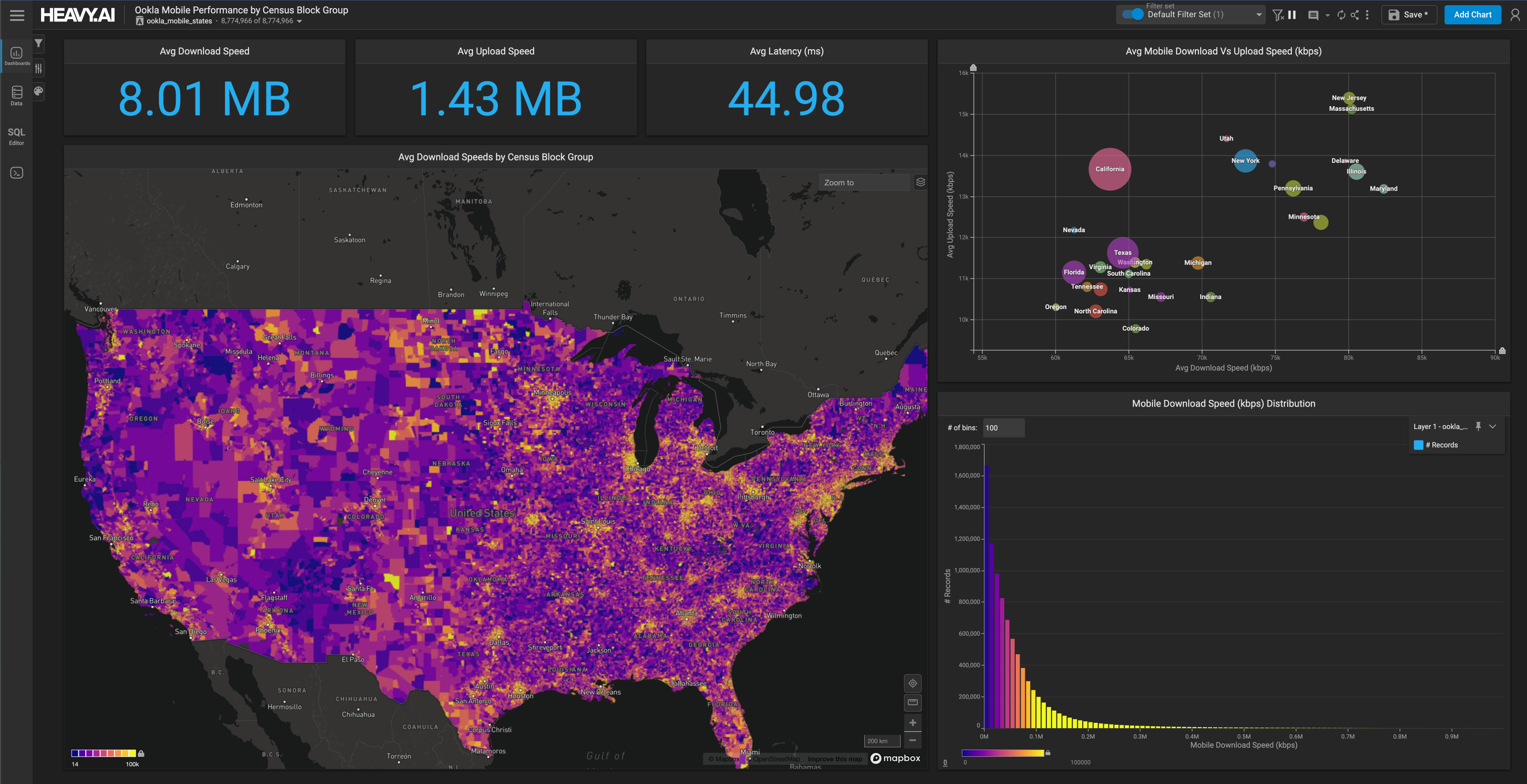
Is Snow Coming Later? 600M+ NOAA Historical Snowfall Data Records Hold the Answer
Try HeavyIQ Conversational Analytics on 400 million tweets
Download HEAVY.AI Free, a full-featured version available for use at no cost.
GET FREE LICENSEWe’ve recently stumbled across many posts by snowboarders and skiers lamenting the lack of snow all over North America.
Nearly every mountain (as of early December 2021) seems to be bone dry or running on machine-made snow.
This is not the first bad December (for snow) in recent memory. Many of us feel snow is coming later or more sporadically than before.
It’s one thing to have a gut feeling. It’s another to test that inclination with historical snowfall data.
- Does the data show that snow is coming later?
- Is a late November resort opening date a thing of the past?
This post will show how we imported 600+ million NOAA snowfall data records into HEAVY.AI to analyze and visualize the last 120 years of snowfall trends.
Historical Snowfall Data Import
We reused our previous work from NOAA’s GHCN data blog post to load the snowfall data.
The gist is that NOAA’s Global Historical Climatology Network dataset includes several centuries of temperature, precipitation, and snow accumulation data records for thousands of stations all over the world.
This data is invaluable for doing any climate change analysis.
We made a few tweaks to the Python notebook (from that previous blog post) to filter out the snow-related records only.
We then joined the latitude, longitude, and other GHCN station information using the query we created for the previous blog post:
Now I had a table, df_snow_geo, with all of the snowfall (coded as SNOW in the element_ column) and snow depth data in millimeters (coded as SNWD in the element_ column). The next step was to create a dashboard for analyzing and visualizing this data.
Snowfall Data Visualization Dashboard Creation
There’s no right way to visualize this NOAA snow data, but here are the chart types we included in this dashboard:
- A point map with the NOAA stations styled on the SNOW level and a points layer with several hundred ski resorts to make it easier to lasso the right area of the map
- A New Combo Chart for the decades and amount of SNOW/SNWD
- A bar chart that features the months of the year and the amount of SNOW/SNWD
- Two number charts for SNOW/SNWD
- A parameter on the element_ column for easier toggling between SNOW and SNWD

Historical Snow Data Analysis
We wondered if it used to snow more in November and December and how that’s changed over time for ski areas.
We lassoed the NOAA stations around the Lake Tahoe ski resorts and filtered out November monthly snowfall data only.

Oddly, the snow depth (SNWD) is trending up.

Interestingly, the California snowfall data pattern is much less evident in Colorado, and the levels look flat.

Vermont area ski resorts have gained January snow in recent years.

Washington State looks similar to California’s annual snowfall data pattern.

When we view North America as a whole, we see a downward trend in December snowfall levels.

But we see a relative increase in average snow depth in the last six decades.

Is the ski season starting later, on average?
Based on what we found in the NOAA historical snowfall data, it depends on location. California and Washington ski areas have declining December snowfall, whereas Colorado and Vermont do not.




